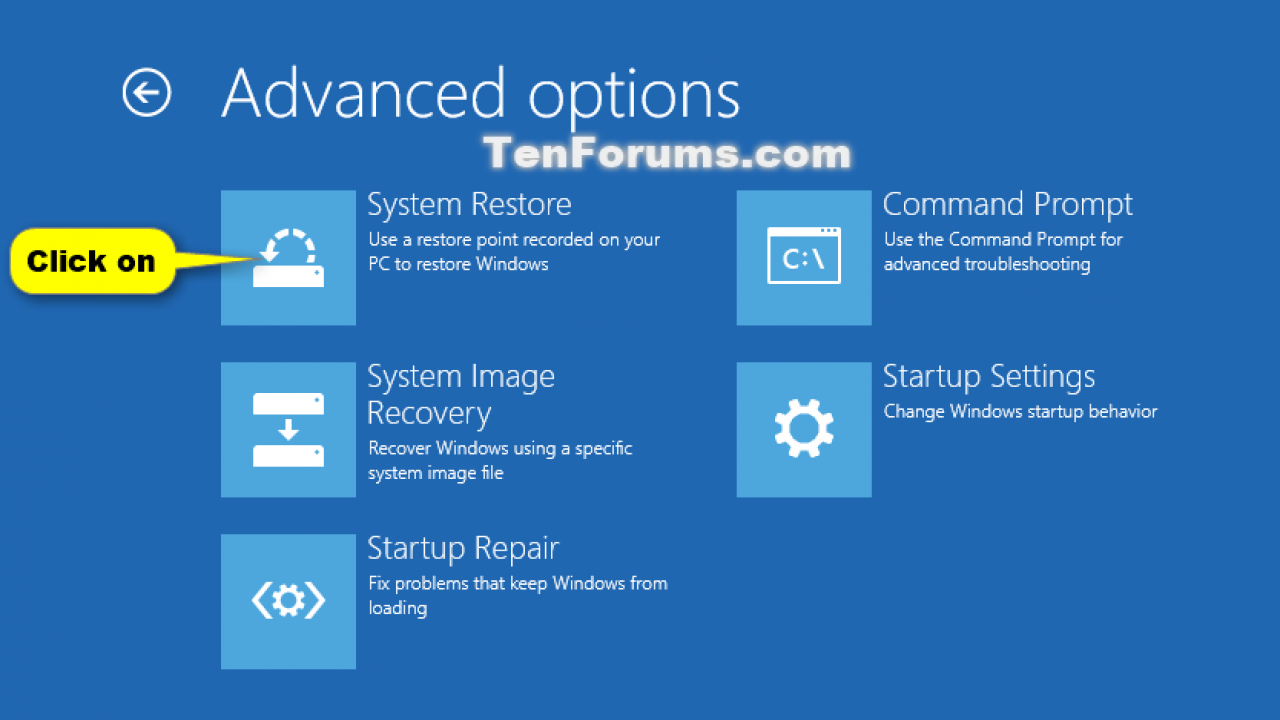

- #WINDOWS 10 BOOT MENU AT STARTUP HOW TO#
- #WINDOWS 10 BOOT MENU AT STARTUP PC#
- #WINDOWS 10 BOOT MENU AT STARTUP WINDOWS 8#
- #WINDOWS 10 BOOT MENU AT STARTUP WINDOWS 7#
Note that you can't use the Startup Settings option with this method.If you’re getting a completely blank screen when Windows tries to start, then – if you’re reasonably confident – it may be worth taking a look inside to make sure that all the hardware is slotted in as it should be. Click Repair your computer at the bottom, as shown below. Select your language and other preferences and click Next.ģ. Boot from a Windows 8/8.1 or 10 installation DVD or USB.Ģ.
#WINDOWS 10 BOOT MENU AT STARTUP WINDOWS 8#
Launch Boot Options Menu from Windows 8 or 10 Installation USB or DVDġ. Note that you can't use the Startup Settings option with this method. Choose your keyboard layout as shown below. Launch Boot Options Menu from Recovery DriveĢ. On the next screen, click on Choose other options, as shown below. At the Choose an operating system boot screen, click on Change defaults or choose other options, near the bottom.Ģ.
#WINDOWS 10 BOOT MENU AT STARTUP HOW TO#
Tip: If you only have one OS installed, here's a neat trick to simulate the dual-boot behavior: How to add Safe Mode as a Boot option to the "Choose an operating system" screen in Windows 8, 10.ġ.
#WINDOWS 10 BOOT MENU AT STARTUP WINDOWS 7#
For example, it's applicable when you dual boot Windows 7 with 8/8.1 or dual boot Windows 7 or 8 with 10. This option is only available if you have more than 1 OS installed. Tip: By default you get a 30 seconds delay, so if you want to speed things up and execute the command instantly, you can type the following: shutdown.exe /r /o /t 0 Launch Boot Options Menu from "Choose an Operating System" screen r does the restart and /o launches the Boot Options menu. In Windows 10, these two command prompt entries have been replaced with PowerShell ones, but you can revert this behavior.Ģ. Here are more ways to open a Command Prompt (Admin). alternatively, you can right-click the bottom-left Start icon and choose Command Prompt or Command Prompt (Admin). Open a Command Prompt by pressing Win+X and choosing Command Prompt or Command Prompt (Admin). All the other methods to open Power menu work fine with this tutorial.ġ. Note that the ALT+F4 method in that tutorial does not apply here, because Shift+Restart in the step below will not work. Here are more ways to open the Power menu in Windows 8 and 10. Choose Recovery and click on Restart under Advanced startup, in the right panel.Ī simple way to do this is by pressing Win+I (capital " i ").
#WINDOWS 10 BOOT MENU AT STARTUP PC#
Here are more ways to open the PC Settings app in Win 8 or 10.ģ. Launch Boot Options Menu from PC SettingsĪ simple way to do this is by pressing Win+I (that's capital "i") to open the Settings charm and click Change PC Settings at the bottom. Launch Boot Options Menu from Windows 8 or 10 Installation USB or DVD.Launch Boot Options Menu from Recovery Drive.Launch Boot Options Menu from "Choose an Operating System" screen.Launch Boot Options Menu from Power Menu.Launch Boot Options Menu from PC Settings.Here are 6 of them, starting with the easier ones:
There are several ways to get to the Boot Option menu. In an ideal scenario, Windows 8 and 10 detects if your OS was not loaded successfully and, in that case, it will reboot automatically to the Boot Options menu. In some situations you'll need to provide Administrator credentials.

Some of the operations above are performed in the Windows RE (Recovery Environment) and will result in a restart. When you launch the Boot Options menu, all users are signed off. Screenshots of some of these options are shown at the bottom of the tutorial.


 0 kommentar(er)
0 kommentar(er)
